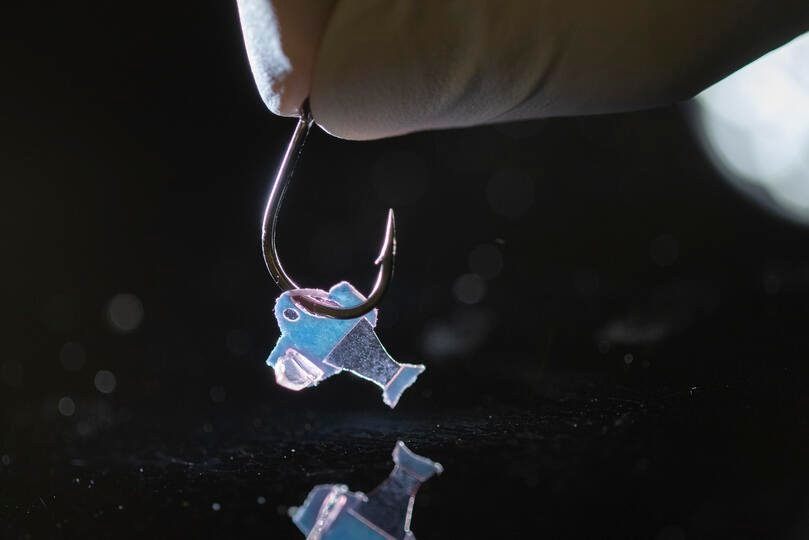
The biohybrid fish, inspired by the zebrafish, can improve its swimming motion over time. (Image Credit: Michael Rosnach, Keel Yong Lee, Sung-Jin Park, Kevin Kit Parker)
Harvard University and Emory University researchers recently developed an autonomous biohybrid fish with human heart cells that powers its flapping tail. The team used paper, plastic, gelatin, and two strips of human heart muscle cells, which contract like a human heart and provide the fish with swimming capabilities. This project could ultimately pave the way toward producing a complex artificial muscular pump while providing a platform for studying heart disease.
"Our ultimate goal is to build an artificial heart to replace a malformed heart in a child," said Kit Parker, senior author of the study. "Most of the work in building heart tissue or hearts, including some work we have done, is focused on replicating the anatomical features or replicating the simple beating of the heart in the engineered tissues. But here, we are drawing design inspiration from the biophysics of the heart, which is harder to do. Now, rather than using heart imaging as a blueprint, we are identifying the key biophysical principles that make the heart work, using them as design criteria, and replicating them in a system, a living, swimming fish, where it is much easier to see if we are successful."
The team sought inspiration from a zebrafish's shape and swimming motion to engineer this device. Compared to other devices, this tail fin contains a single layer of muscle cells on both sides. One side contracting causes the other to stretch, which opens a mechanosensitive protein channel. In turn, this forces a contracting motion, triggering a stretch. This process leads to a closed-loop system that allows the fish to swim for over 100 days.
"By leveraging cardiac mechano-electrical signaling between two layers of muscle, we recreated the cycle where each contraction results automatically as a response to the stretching on the opposite side," said Keel Yong Lee, a postdoctoral fellow at SEAS and co-first author of the study. "The results highlight the role of feedback mechanisms in muscular pumps such as the heart."
In addition, the team developed an autonomous pumping node that controls the contractions' frequency and rhythm. Both the pacing node and muscle cell layers work together to generate continuous, spontaneous, and coordinated back-and-forth motion.
"Because of the two internal pacing mechanisms, our fish can live longer, move faster and swim more efficiently than previous work," said Sung-Jin Park, a former postdoctoral fellow in the Disease Biophysics Group at SEAS and co-first author of the study. "This new research provides a model to investigate mechano-electrical signaling as a therapeutic target of heart rhythm management and for understanding pathophysiology in sinoatrial node dysfunctions and cardiac arrhythmia."
On the plus side, this biohybrid fish improves with time. In this case, the maximum swimming speed, contraction amplitude, and muscle coordination increased while the cardiomyocyte cells matured in the first month. After a while, the biohybrid fish's speed and swimming efficacy matched a zebrafish.
The team plans on creating more biohybrid systems made of human heart cells in the future.
Have a story tip? Message me at: http://twitter.com/Cabe_Atwell
